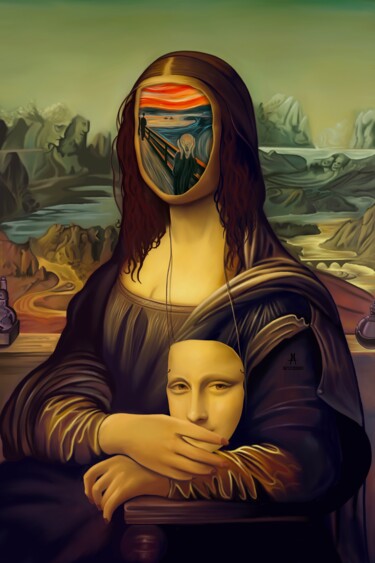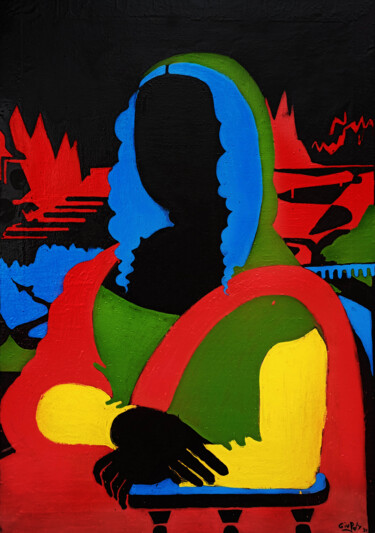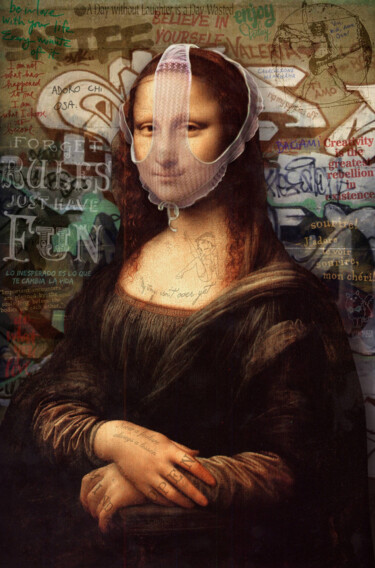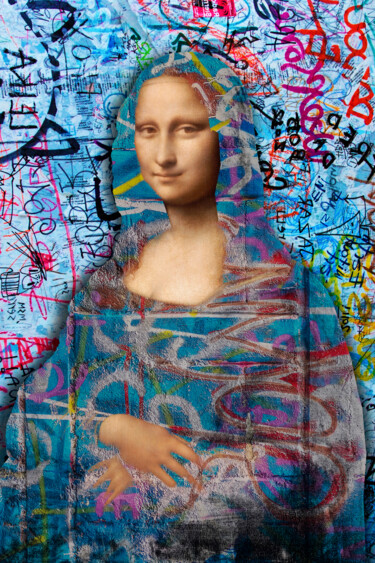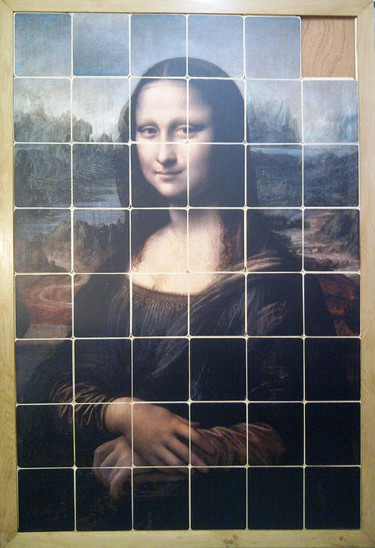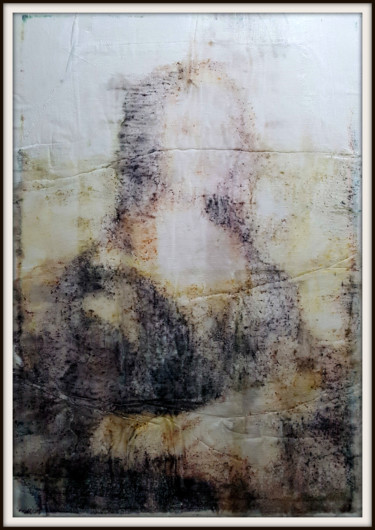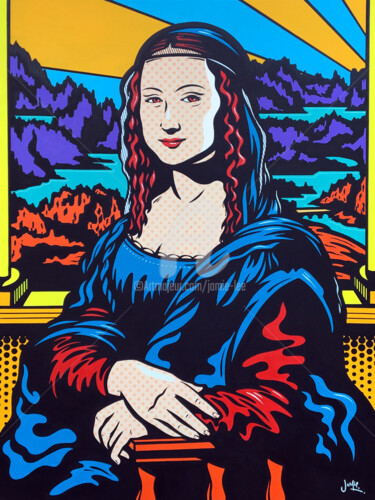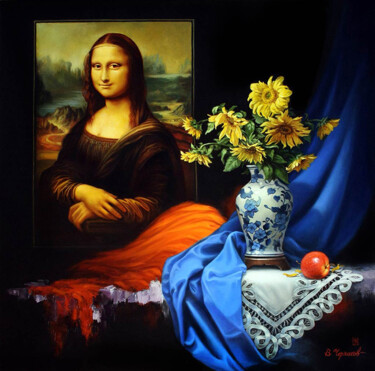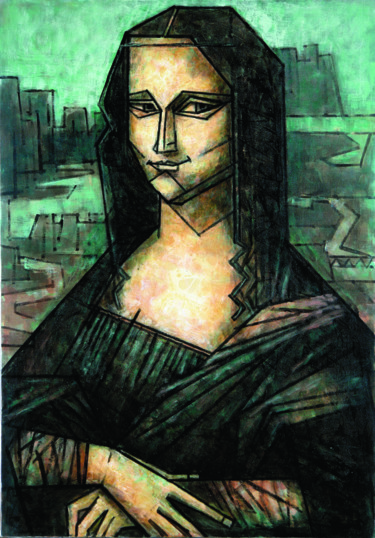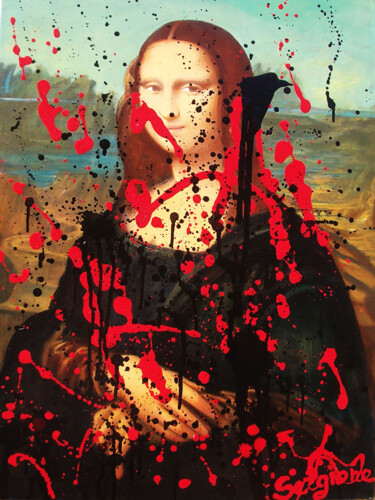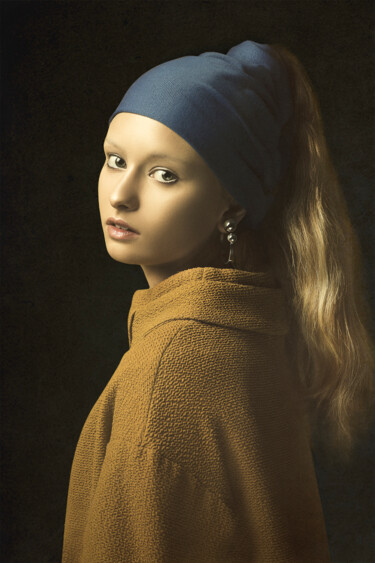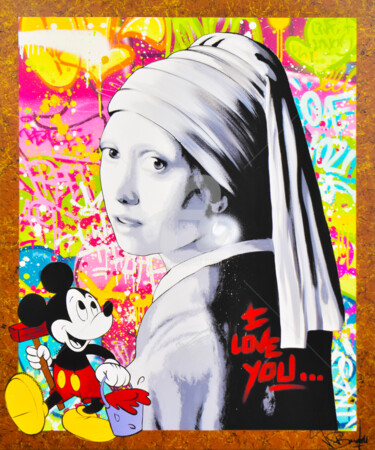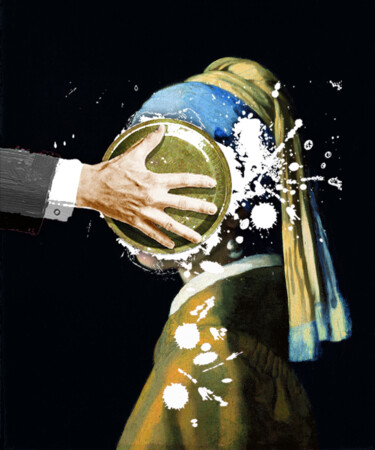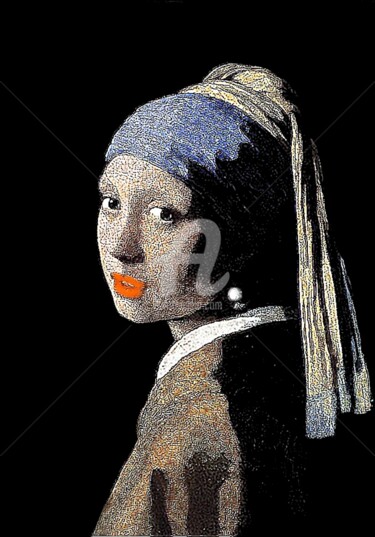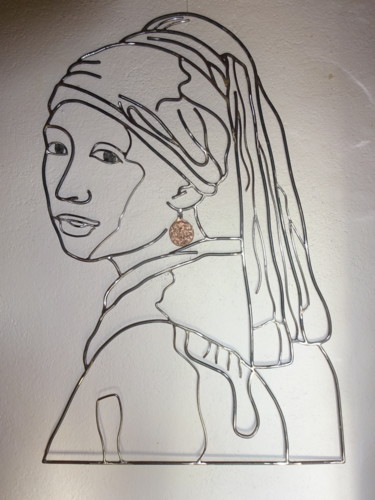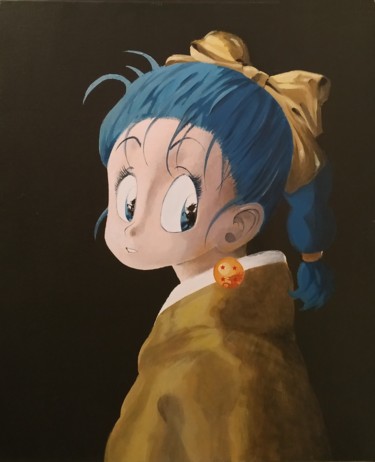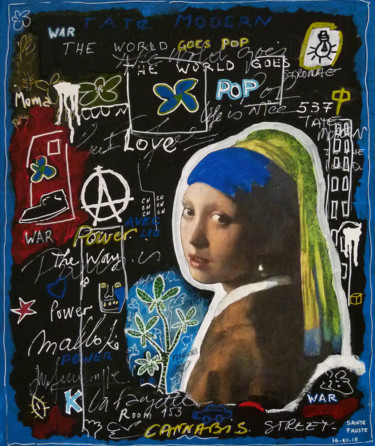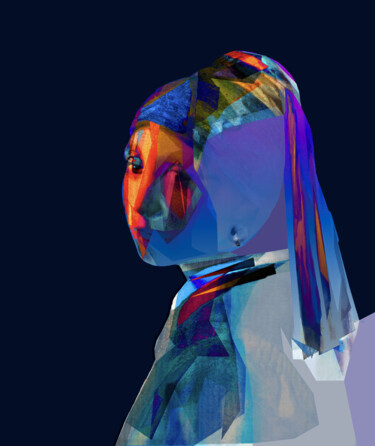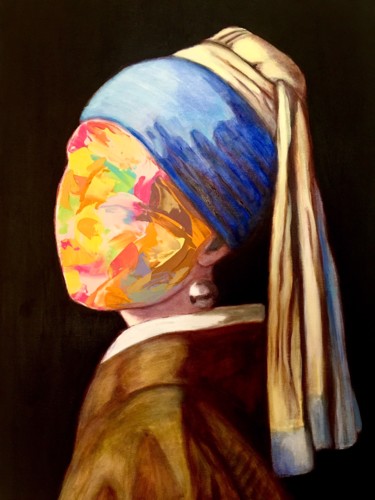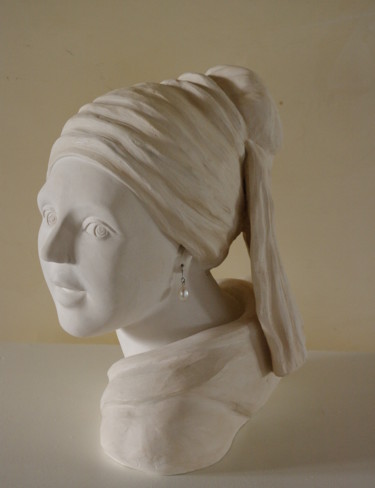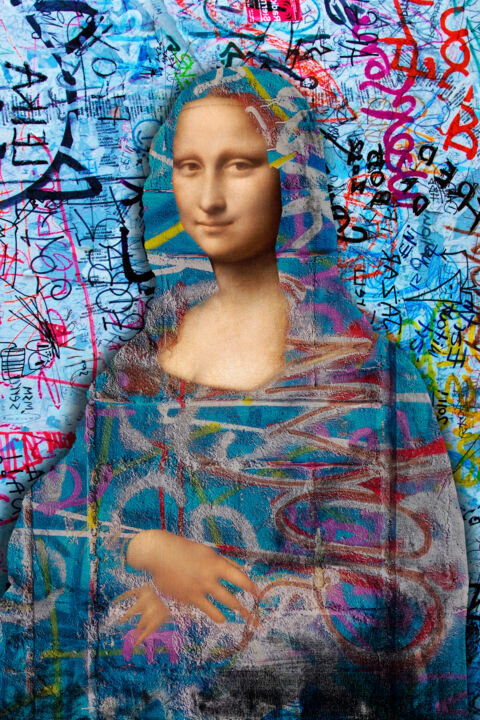 Tony Rubino, Leonardo da Vinci's portrait of Mona Lisa del Giocondo Graff, 2022. Acrylic / lithograph on canvas, 61 x 40,6 cm.
Tony Rubino, Leonardo da Vinci's portrait of Mona Lisa del Giocondo Graff, 2022. Acrylic / lithograph on canvas, 61 x 40,6 cm.
Leonardo da Vinci: Mona Lisa
The Portrait of Mona Lisa, also known as La Gioconda, is an essential masterpiece of art history, which, made by the great master Leonardo da Vinci, between 1503 and 1505, is kept at the Louvre Museum in Paris. In the painting, the woman portrayed in the foreground sits facing to the left, with her hands elegantly gathered and resting on an armrest, her face positioned frontally and her gaze directed towards the observer. This figure stands out from the landscape behind her which, distant and less defined, is realized through the use of aerial perspective and sfumato, brilliant technical innovations brought by the Italian master to the world of art. However, in order to harmonize this composition, Leonardo also slightly faded the outlines of the protagonist of the work, creating an atmosphere of soft contrasts. Finally, although these innovations have definitely contributed to the great popularity of the painting, there are many other reasons behind the success of the Mona Lisa, which certainly deserve to be explored.
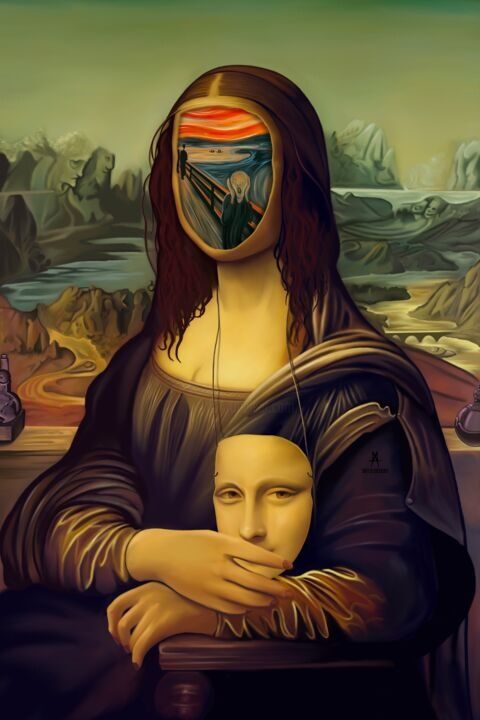 Marc-Ariel Bizeray De La Michellerie (MABDLM), La Gioconda, 2020. Digital painting on canvas, 100 x 70 cm.
Marc-Ariel Bizeray De La Michellerie (MABDLM), La Gioconda, 2020. Digital painting on canvas, 100 x 70 cm.
 Marco Battaglini, Forget rules, 2017. Painting / areograph on canvas. 85 x 60 cm.
Marco Battaglini, Forget rules, 2017. Painting / areograph on canvas. 85 x 60 cm.
Mona lisa: the reasons for its great success
The Mona Lisa, hanging behind bullet-proof glass in one of the halls of the Louvre Museum, is the undisputed icon of this institution and one of the main reasons for its attendance. Nevertheless, the aforementioned painting, once seen up close, might also seem, simply and trivially, a small portrait of an ordinary woman, modestly dressed in dark 16th century clothing. In fact, the great popularity of the Mona Lisa cannot be attributed only to purely technical, stylistic and aesthetic reasons, but is also to be found in specific characteristics, circumstances and events. In the first place, the painting is strongly distinguished by the gaze and expression of the effigy, which is gathered in an unforgettable, enigmatic and ambiguous smile just mentioned. This mysterious attitude is also accompanied by another controversial question, namely, who would be the woman Leonardo would have wanted to immortalize? Referring to the important testimony of Giorgio Vasari (1511-1574), the Mona Lisa could be Lisa Gherardini, wife of Francesco Giocondo, a rich Florentine merchant who commissioned the work, to whom however Leonardo never delivered the masterpiece, which was later acquired by the King of France Francis I. Moreover, the mysterious work is certainly so famous thanks to the popularity of the "container" that houses it, namely the grandiose institution of the Louvre Museum. In addition, the fact that the painting was part of the royal collection of France and, for a brief period, was placed in Napoleon's bedroom, are not data of negligible relevance. To add to what has been said, there is the fame of Leonardo da Vinci, consecrated in the 19th century as an undisputed genius, and the vicissitudes linked to the theft of the Mona Lisa, which, in 1911, became an unprecedented media event. Just, after the theft, The Gioconda surely increased its celebrity, even if, with the First World War, this great attention was soon consumed. Subsequently, the masterpiece came back into vogue thanks to the Duchampian remake of 1919, which started a trend of famous remakes, which made the work iconic. In fact, after the French master, other great artists gave their personal interpretation of Leonardo's painting, such as Andy Warhol, Basquiat, Botero and, even the most contemporary street artist, Bansky. In conclusion, the success of the Mona Lisa lies in a mix of stylistic, technical, historical, media and historical-artistic factors that have granted the work the status of an immortal icon.
 Pookky (Francky Art), Mona trop pop, 2017. Acrylic / spray / ink / lacquer / marker / collage on Canvas, 116 x 73 cm.
Pookky (Francky Art), Mona trop pop, 2017. Acrylic / spray / ink / lacquer / marker / collage on Canvas, 116 x 73 cm.
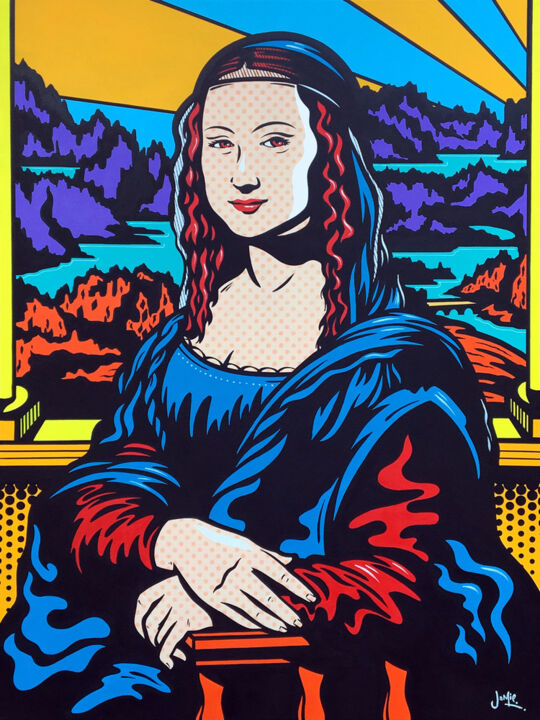 Jamie Lee, Mona Lisa, 2020. Acrylic on canvas, 80 x 60 cm.
Jamie Lee, Mona Lisa, 2020. Acrylic on canvas, 80 x 60 cm.
Mona Lisa: contemporary interpretations
Jamie Lee: Mona Lisa
Just like the most important masters, the artists of Artmajeur wanted to reinterpret Leonardo da Vinci's Mona Lisa, exploring this subject in different ways, sometimes referring to stylistic elements derived from particular artistic movements, on other occasions using a biting irony, or updating the masterpiece, that is, transforming it into a manifesto of the contemporary era. The first of these intentions was carried out by the artistic experimentation of Jamie Lee, who faced the Mona Lisa making explicit reference to the comic Pop art of Roy Lichtenstein. Within this last artistic movement, however, it was Andy Warhol who reinterpreted The Gioconda, creating, at the beginning of the sixties, different versions, among which Thirty are better then one of 1963-64. In Warhol's work, however, the serial reproduction of the subject, aimed at alluding to the consumer society, inexorably involves the loss of uniqueness and "sacredness" of the work of art. This is quite different from the purpose carried out by Lee, who wants to pay homage to the Italian masterpiece, generating a new work, unique and iconic, characterized by a careful and refined rendering of shapes, volumes and colors.
 Bogdan Botofei, Freedom #1, 2021. Digital art, several formats available.
Bogdan Botofei, Freedom #1, 2021. Digital art, several formats available.
Bogdan Botofei: Freedom #1
About the most ironic and irreverent interpretations of the Mona Lisa, the courage to dare distinguishes the work of the artist of Artmajeur, Botofei, entitled Fredom #1, where, to a new and monstrous Gioconda, some surreal visions are added, which are mixed with details of the contemporary world, probably, with the intent to allude to the evils, vices, aggressiveness and strangeness of our time. This kind of artistic, provocative and critical investigation, realized through contemporary digital techniques, is very close to the attempt of denunciation hidden behind another Mona Lisa, the moustachioed one by Marcel Duchamp. In fact, the French masterpiece, accompanied by the inscription "L.H.O.O.Q.", or "she is hot in the ass", wanted to symbolically transform The Gioconda in a sort of malicious "prostitute", in order to denounce the commodification of the arts and the consequent passivation of the public.
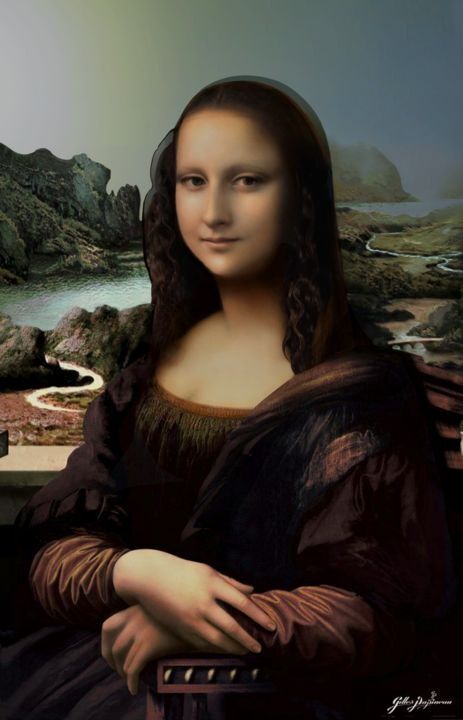 Gilles Papineau, Mona Lisa, 2018. Digital art, several formats available.
Gilles Papineau, Mona Lisa, 2018. Digital art, several formats available.
Gilles Papineau: Mona Lisa
As for the artists of Artmajeur, who wanted to resume the work of the Italian genius in a more "classic" and "faithful" way, but referring to the artistic techniques and contemporary taste, we can take as an example the Mona Lisa by Gilles Papineau. In fact, this Gioconda, created through the use of modern digital painting, represents a very up-to-date version of Leonardo's masterpiece, where the perfectly polished and shiny face almost seems to allude to the "lifting" effect. Probably, the work wanted to be a mirror of our times and refer to the contemporary search for aesthetic perfection, which, in this case, has not spared even the greatest masterpieces of art. Finally, these characteristics also converge in the creation of an unprecedented type of "realism", which represents a sort of digital evolution of that of da Vinci.

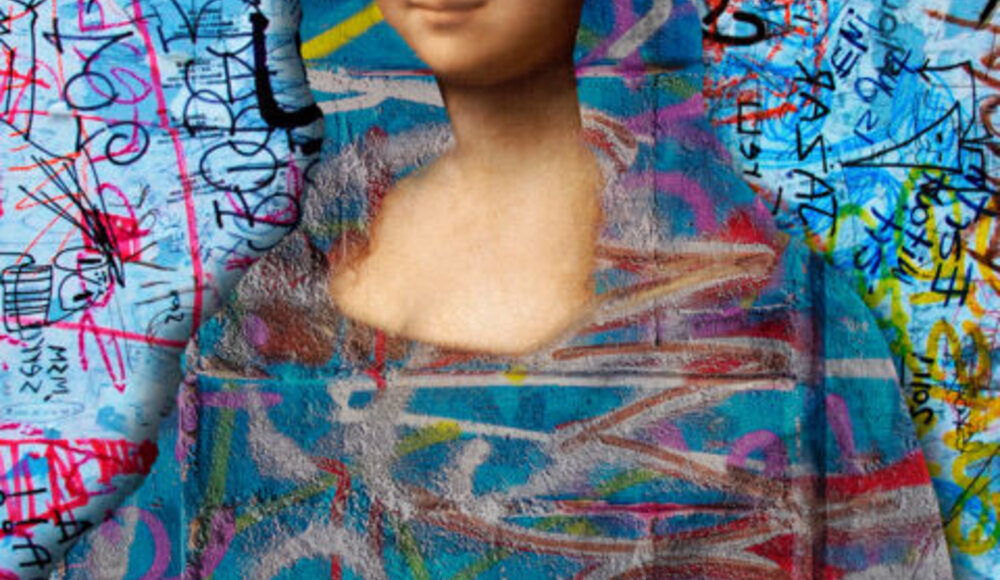
 Olimpia Gaia Martinelli
Olimpia Gaia Martinelli
